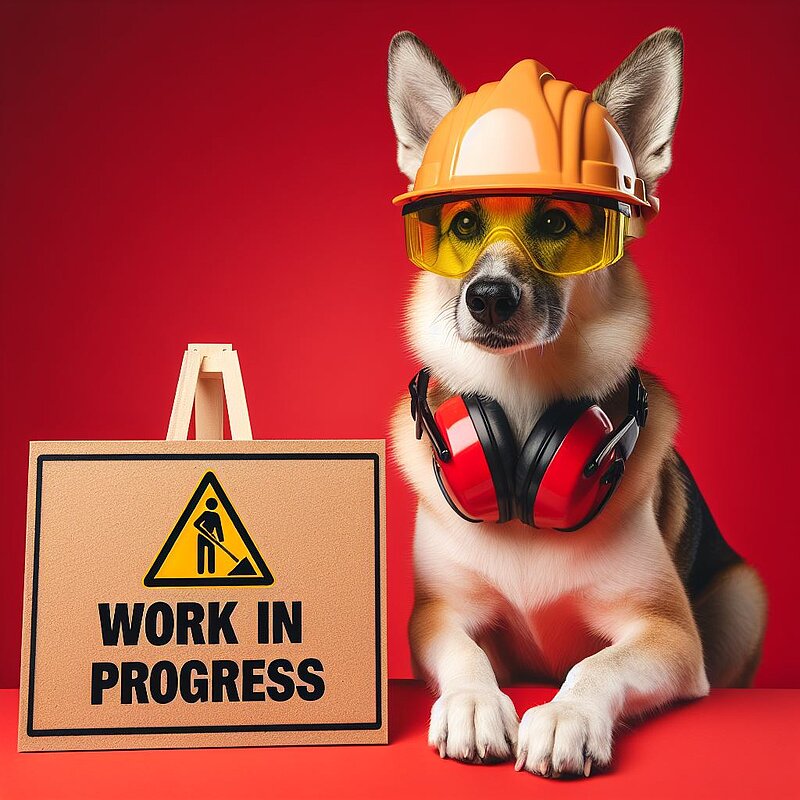
The Grand Bleu de Gascogne: the noble hunter
History of the Grand Bleu de Gascogne
The Grand Bleu de Gascogne has a long and fascinating history dating back to the Middle Ages. It originally comes from the Gascony region in southwest France. It is the result of a cross between various French running dogs and the ancient bloodhounds brought to Europe by the Phoenicians. This breed was particularly popular with the French aristocracy and was mainly used for hunting large game such as wild boar and deer.
Who is the Grand Bleu de Gascogne suitable for?
The Grand Bleu de Gascogne is an excellent companion for active people who spend a lot of time outdoors. It is ideal for hunters and people who love long walks or runs. Due to his strong hunting instinct and need for exercise, he is less suitable for city life unless you can provide him with sufficient exercise and activity.
Character and behavior
This breed is characterized by its friendly and balanced character. Grand Bleu de Gascognes are very affectionate and loyal to their families. They are courageous and determined, especially when hunting. Their intelligence makes them adaptable and cooperative dogs, although they can sometimes be stubborn.
Appearance of the Grand Bleu de Gascogne
The Grand Bleu de Gascogne is a large, elegant dog with an impressive build. It has a short, dense coat that is predominantly white with black patches. The characteristic blue shading, which is created by the interplay of black and white hairs, gives it its name. It has long, drooping ears and expressive, dark eyes.
Care and health
Grooming the Grand Bleu de Gascogne is relatively uncomplicated. Its short coat should be brushed regularly to remove loose hair and keep the skin healthy. Regular checks of the ears are important as they can be prone to infection due to their shape. The health of this breed is generally robust, although like many large dogs, they can be prone to hip dysplasia.
Size and weight
An adult Grand Bleu de Gascogne reaches a shoulder height of 62 to 72 cm and weighs between 30 and 35 kg. This stately size contributes to its impressive presence.
Exercise requirements
The Grand Bleu de Gascogne has a high exercise requirement and needs plenty of exercise. Long walks, jogs and opportunities to run freely in secure areas are ideal. Without sufficient exercise and mental stimulation, he can become frustrated and destructive.
Training recommendations
This intelligent breed benefits from consistent and patient training. Positive reinforcement methods are particularly effective. Due to their strong hunting instinct, early training and socialization is crucial to ensure they respond well to commands and get along well with other animals and people.
Grooming advice
In addition to regular grooming, the Grand Bleu de Gascogne's claws should be trimmed regularly to prevent overgrowth and any resulting problems. Dental care is also important, so teeth should be cleaned regularly to prevent tartar build-up and gum disease.
Behavior with children and other animals
The Grand Bleu de Gascogne is generally friendly and patient with children. However, due to its size and energy, interactions should always be supervised to ensure that both child and dog are safe and happy. The Grand Bleu de Gascogne usually gets along well with other dogs, especially if socialized early. However, small animals can be problematic due to its hunting instinct.
Recognition by the FCI
Yes, the Grand Bleu de Gascogne is recognized by the Fédération Cynologique Internationale (FCI) and belongs to Group 6, the running and welding dogs.
Interesting facts
Did you know that the Grand Bleu de Gascogne is still highly valued in hunting today thanks to its impressive nose and stamina? Its history and abilities make it a true heir to the art of hunting.